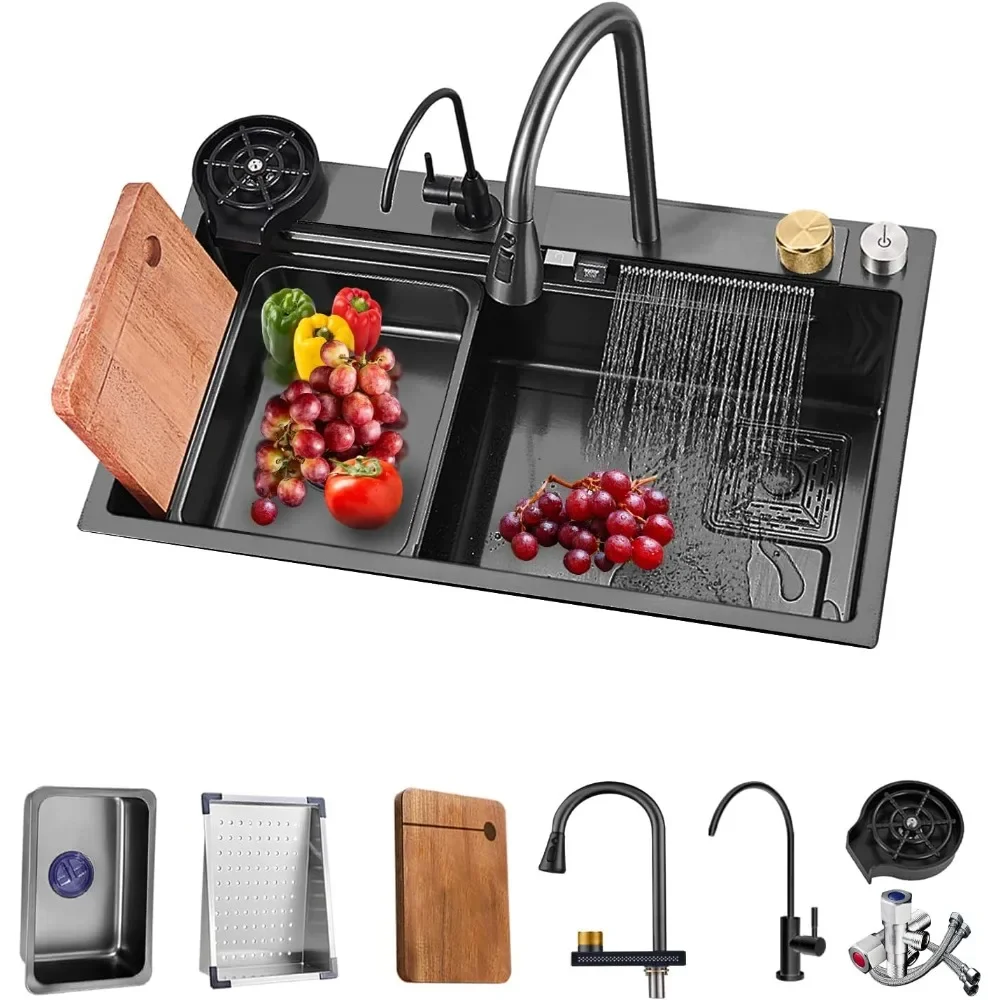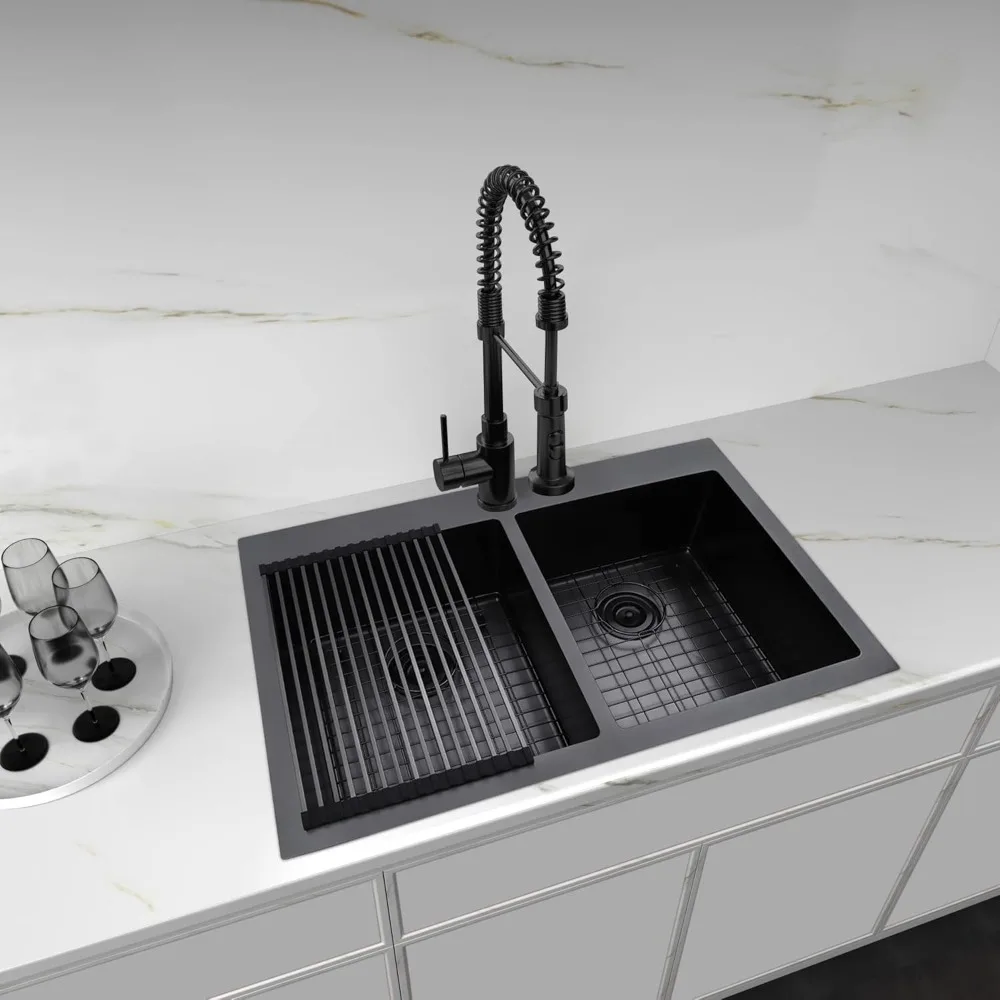Introduction to Kitchen Sink Measurements
The Importance of Accurate Measurements
When planning a kitchen remodel or installation, accurate measurements for kitchen sinks are crucial. A sink that doesn’t fit properly can lead to installation issues, affect the functionality of the space, and even cause unnecessary expenses. Understanding how kitchen sinks are measured helps ensure that the chosen sink fits perfectly in the designated area, complements the kitchen design, and meets all practical needs. This comprehensive guide will walk you through the various aspects of measuring kitchen sinks, from standard dimensions to custom considerations.
Common Kitchen Sink Types and Their Dimensions
Kitchen sinks come in various styles and sizes, each suited for different needs and preferences. Common types include undermount sinks, drop-in sinks, farmhouse sinks, and integrated sinks. Each type has its standard dimensions, but customization is also possible. For example, a standard drop-in sink might measure 22 x 30 inches, while a farmhouse sink could be 33 inches wide. Knowing the standard dimensions of each type will help you make informed decisions when measuring for your new sink.

Measuring the Sink Opening
Measuring the Cabinet Opening
The first step in measuring for a new kitchen sink is determining the size of the cabinet opening where the sink will be installed. This measurement ensures that the sink will fit properly into the cabinet and allows for adequate clearance around the sink. To measure the cabinet opening, start by measuring the width and depth of the opening from inside edge to edge. Make sure to account for any obstructions such as plumbing or cabinet framing that might affect the fit. Record these measurements carefully, as they will guide your choice of sink size.
Accounting for Clearance and Plumbing
In addition to measuring the cabinet opening, it’s important to consider the clearance required for plumbing fixtures. The sink’s dimensions should allow enough space for faucet installation, drainage, and any other plumbing components. Measure the distance from the back of the cabinet to the nearest wall or obstruction, and ensure that the sink will not interfere with existing plumbing lines. This consideration helps avoid potential installation issues and ensures that the sink functions properly once installed.
Measuring Sink Depth
Understanding Sink Depth and Its Importance
Sink depth, or the distance from the sink’s rim to the bottom of the basin, is a crucial measurement that affects the sink’s functionality. A deeper sink provides more space for washing large pots and pans and can be more comfortable for users. However, it’s important to ensure that the depth of the sink is compatible with the overall design of the kitchen and the available space. Measuring sink depth accurately helps in selecting a sink that balances functionality and aesthetics.
How to Measure Sink Depth
To measure sink depth, use a tape measure to determine the distance from the top edge of the sink to the bottom of the basin. If you’re measuring an existing sink, ensure that the measurement is taken from the inside edge of the rim to the deepest part of the basin. For a new sink, this measurement should be checked against the cabinet depth and countertop height to ensure that it will fit comfortably in the intended space. Consider the overall design of your kitchen when choosing the depth to ensure that it meets your needs.

Measuring Sink Width and Length
Standard Dimensions for Sink Width and Length
The width and length of a kitchen sink are fundamental dimensions that determine how much space the sink will occupy. Standard widths and lengths vary based on sink type and style. For example, a standard single-basin sink might measure 22 inches in width and 30 inches in length, while a double-basin sink might be 33 inches wide and 22 inches deep. Understanding these dimensions helps in selecting a sink that fits within the available space and complements the kitchen layout.
How to Measure Sink Width and Length
To measure the width and length of a sink, place the tape measure across the top edge of the sink from one side to the other for width, and from the front edge to the back for length. Ensure that the measurement is taken from the inside edge of the sink rim for accuracy. If measuring an existing sink, be aware of any variations in the sink’s shape or design that might affect the measurements. Accurate width and length measurements are essential for ensuring that the sink fits properly in the designated area.
Considering Sink Mounting Styles
Different Sink Mounting Styles
Sink mounting styles can significantly impact how measurements are taken and the overall installation process. Common mounting styles include undermount, drop-in, and farmhouse sinks. Each style has specific requirements for measurements and installation. For instance, undermount sinks are installed beneath the countertop and require precise measurements to ensure a proper fit, while drop-in sinks sit on top of the countertop and have different measurement considerations.
How to Measure for Different Sink Mounting Styles
When measuring for different sink mounting styles, consider the specific installation requirements for each type. For undermount sinks, measure the countertop opening and ensure that the sink’s dimensions match the opening precisely. For drop-in sinks, measure the countertop cutout and ensure that the sink fits securely within the cutout. Farmhouse sinks often require measurements for both the sink and the surrounding cabinetry to ensure a seamless installation. Accurate measurements for each mounting style help achieve a professional and functional installation.
Measuring for Sink Accessories
Importance of Sink Accessories
Sink accessories such as cutting boards, colanders, and drying racks can enhance the functionality of your kitchen sink. When selecting these accessories, it’s important to measure the sink to ensure that the accessories will fit properly. Accessories that do not fit well can hinder the sink’s usability and affect the overall efficiency of the kitchen.
How to Measure for Sink Accessories
To measure for sink accessories, first determine the dimensions of the sink’s basin, including the width, length, and depth. Measure the interior dimensions of the sink to ensure that accessories such as a cutting board or colander will fit comfortably within the basin. Additionally, consider the sink’s edge dimensions and any specific mounting or installation requirements for accessories. Accurate measurements help in selecting accessories that are functional and compatible with the sink.

Measuring for Sink Drain and Faucet Compatibility
Understanding Drain and Faucet Compatibility
Sink drains and faucets must be compatible with the sink’s dimensions and design to ensure proper functionality and installation. The size and placement of the drain and faucet affect how well the sink integrates with the kitchen’s plumbing system and overall design. Accurate measurements are crucial for selecting the right drain and faucet.
How to Measure for Drain and Faucet
To measure for drain and faucet compatibility, start by measuring the location and size of the sink’s drain hole. Ensure that the drain hole is properly aligned with the sink’s plumbing system. For faucets, measure the distance from the center of the sink’s drain hole to the desired faucet location. Additionally, consider the height and reach of the faucet to ensure that it will be functional and accessible. Accurate measurements help in selecting faucets and drains that work seamlessly with the sink and kitchen design.
Custom Sink Measurements
When Custom Sinks Are Necessary
Custom sinks may be necessary when standard sizes and styles do not fit the specific requirements of a kitchen. Custom sinks are designed to meet unique dimensions, shapes, and installation needs. Whether due to unusual cabinet sizes, specific design preferences, or special functional requirements, custom sinks provide a tailored solution.
How to Measure for Custom Sinks
When measuring for a custom sink, start by taking precise measurements of the cabinet opening, countertop, and any surrounding structures. Provide detailed measurements, including width, length, depth, and any specific design features. Work with a professional to ensure that all measurements are accurate and that the custom sink is designed to fit perfectly within the intended space. Custom sinks offer flexibility in design and functionality, ensuring that the final product meets all requirements.
Conclusion: Ensuring a Perfect Fit
The Importance of Accurate Measurements
Accurate measurements are essential for ensuring that a kitchen sink fits properly and functions effectively. By carefully measuring the cabinet opening, sink depth, width, length, and other dimensions, you can select a sink that complements your kitchen design and meets your practical needs. Understanding the different types of sinks and their measurement requirements helps in making informed decisions and achieving a successful installation.
Final Tips for Measuring Kitchen Sinks
When measuring for a kitchen sink, double-check all measurements and consider consulting with a professional to ensure accuracy. Take into account factors such as sink mounting style, accessories, and plumbing compatibility to achieve a seamless and functional installation. With careful planning and precise measurements, you can select the perfect kitchen sink that enhances both the aesthetics and functionality of your kitchen space.


